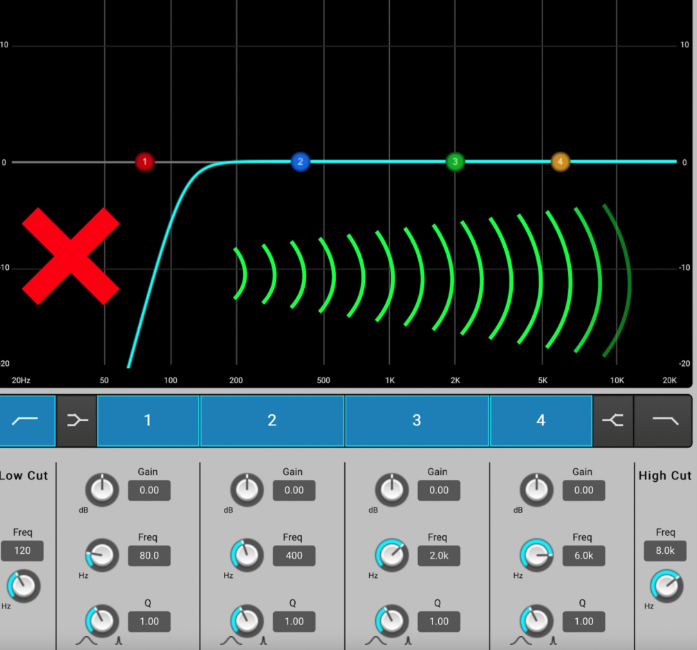Sculpting Sound: A Comprehensive Guide to High-Pass Filters in Music Production
Music production is an art that involves a delicate balance of various audio elements. One crucial tool that producers have at their disposal to shape the sonic landscape is the high-pass filter. In this post, we will explore the world of high-pass filters in music production, examining their history, functionality, creative applications, and the role they play in crafting captivating tracks.
I. The Evolution of High-Pass Filters
Before we dive into the details of high-pass filters, let's take a brief journey through their evolution and how they found their place in the world of audio engineering.
Origins in Analog Signal Processing
High-pass filters are not a recent invention. They have been a part of analog audio processing for decades, where engineers used passive and active circuitry to remove low-frequency content from audio signals. This was often necessary to eliminate unwanted noise and improve signal clarity in recording and broadcasting.
The Digital Revolution
With the advent of digital audio processing in the late 20th century, high-pass filters took on a new form. Digital high-pass filters offered precision and flexibility, making them essential tools in modern music production. They could be applied to individual tracks, mixed audio, and even in real-time during live performances.
II. How High-Pass Filters Work
To understand high-pass filters, we need to grasp their fundamental principles.
Frequency Cutoff
At its core, a high-pass filter allows higher-frequency components of an audio signal to pass through while attenuating or completely removing lower-frequency components. The point at which this transition occurs is called the "cutoff frequency." Everything below this frequency gets attenuated, while everything above it remains largely unaffected.
Slope and Roll-Off
High-pass filters come in various types, each with its own "slope" or "roll-off." This determines how quickly frequencies below the cutoff are attenuated. Common slopes include 6 dB per octave, 12 dB per octave, and 24 dB per octave. Steeper slopes result in a more dramatic reduction of low-frequency content.
III. Practical Applications of High-Pass Filters
High-pass filters are versatile tools that serve several essential functions in music production.
Cleaning Up Mixes
One of the primary uses of high-pass filters is to remove low-frequency noise and unwanted rumble from audio recordings. This ensures that the mix remains clean and free from any distracting low-end artifacts.
Preventing Muddiness
In dense mixes with multiple instruments and tracks, low-frequency buildup can lead to a muddy or boomy sound. High-pass filters are employed on individual tracks to carve out space for the bass and kick drum, ensuring a well-defined low end.
Adding Clarity to Instruments
On the flip side, high-pass filters can be used creatively to add clarity and definition to individual instruments. For example, applying a subtle high-pass filter on a vocal track can help it cut through the mix without overpowering the low-frequency elements.
Special Effects and Sound Design
High-pass filters can be pushed to the extreme to create unique sound effects. When applied aggressively, they can generate thin, eerie, or radio-like sounds that can be used for experimental music or cinematic soundscapes.
IV. Creative Sound Sculpting with High-Pass Filters
Now, let's explore how high-pass filters can be harnessed to craft distinctive sonic textures and atmospheres.
Taming Booming Bass
In genres like electronic dance music (EDM) and hip-hop, powerful bass lines are a staple. However, too much low-end energy can overwhelm a mix. High-pass filters can help control the bass, allowing it to be felt without causing problems in the mix.
Vocal Clarity
In pop and rock music, where vocals are often the focal point, high-pass filters can help achieve vocal clarity. By removing the lowest frequencies of a vocal track, you can make room for the bass and kick drum while ensuring the vocals remain intelligible.
Adding Air and Space
High-pass filters can also be used to add a sense of air and space to instruments. By subtly rolling off the low end of acoustic instruments like guitars or pianos, you can create a more open and transparent sound.
Dynamic High-Passing
Some modern music production techniques involve dynamically applying high-pass filtering. This means automating the cutoff frequency to vary throughout a song, introducing movement and excitement to the mix.
V. High-Pass Filters in Mixing and Mastering
High-pass filters aren't limited to individual tracks. They also play a vital role in the final mix and mastering stages.
Mix Busses
On mix busses (e.g., the drum bus or the instrument bus), high-pass filters can help ensure that the cumulative low-frequency content of all tracks doesn't overwhelm the mix. This maintains a balanced low end and allows for more effective mastering.
Mastering
In the mastering stage, high-pass filters can be used on the entire mix to ensure that it translates well on various playback systems. Careful use of high-pass filtering can eliminate unnecessary subsonic frequencies that might cause problems during vinyl cutting or digital distribution.
VI. High-Pass Filters and the Future of Music Production
As music production technology continues to advance, the role of high-pass filters remains crucial.
Integration with AI
Artificial intelligence (AI) and machine learning are being employed to enhance audio processing tools. High-pass filters can benefit from AI-driven algorithms that can automatically detect and apply appropriate filtering based on the audio content.
Real-time Performance
Live performers are increasingly using high-pass filters in real-time to shape their sound during concerts. MIDI controllers and software allow musicians to manipulate filter parameters on the fly, adding a dynamic element to their performances.
Conclusion
High-pass filters are an indispensable tool in the music producer's toolkit. They offer a wide range of creative possibilities, from cleaning up mixes to sculpting unique sounds and textures. Understanding how to effectively use high-pass filters can elevate your music production skills and help you achieve a polished and professional sound. As technology continues to evolve, high-pass filters will remain a key component in the ever-expanding world of music production.





